URSA MAJOR
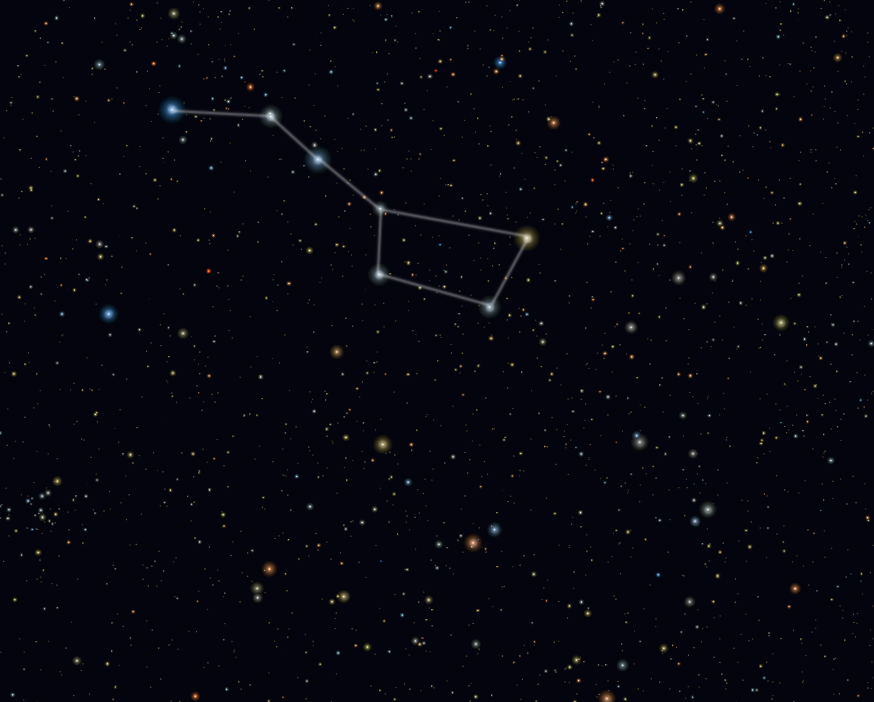
Roberto Mura - Own work,
CC BY-SA 3.0, wikimedia
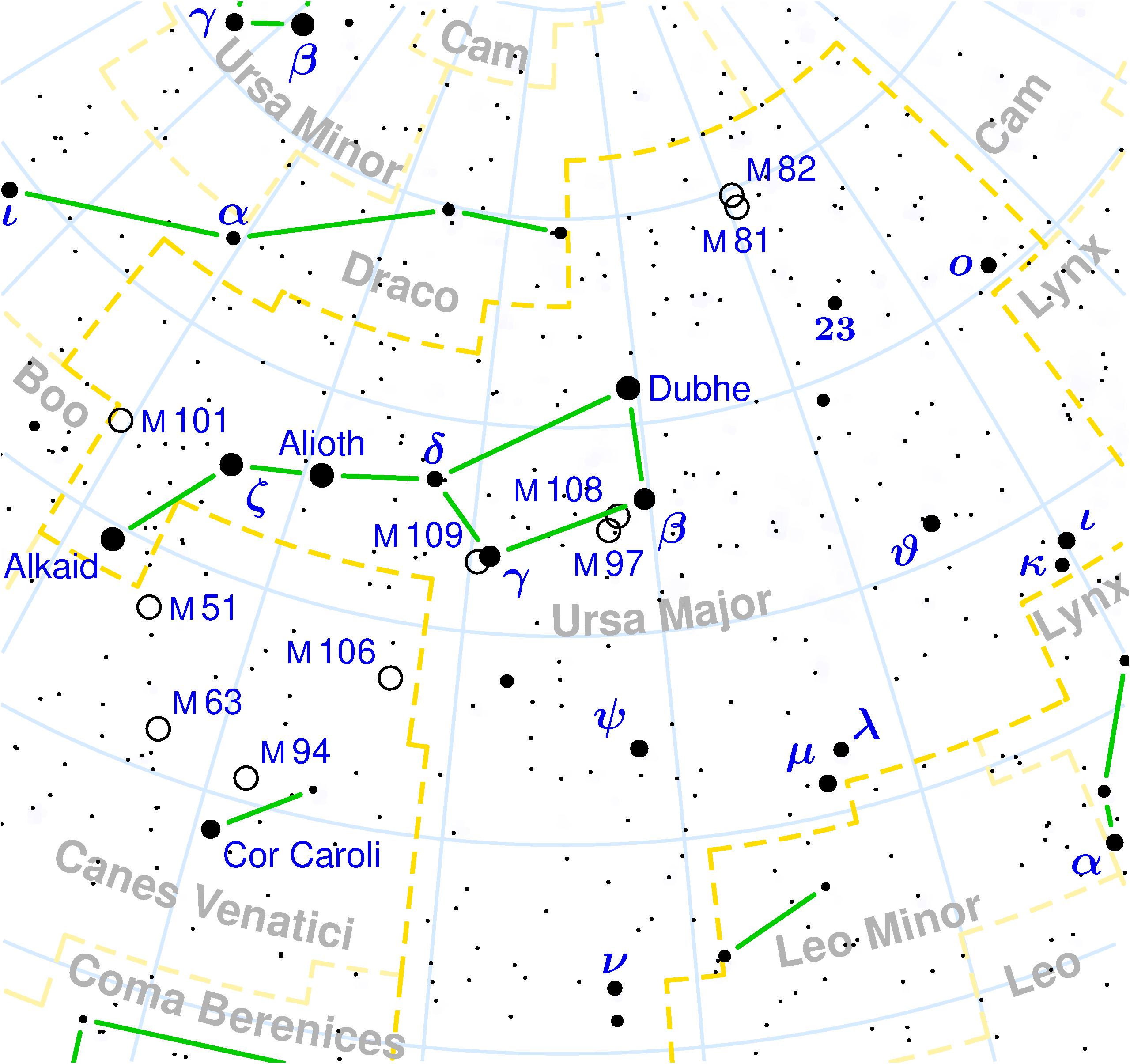
CC BY-SA 3.0, wikimedia
The constellation Ursa Major is visible throughout the year from most of the Northern hemisphere and is in part circumpolar, in fact, the brightest stars never go below the horizon above 41° latitude north. It is surely one of the most famous constellations in the sky. Its seven brightest stars are the most popular as they make up the asterism called ‘The Plough’ or ‘The Big Dipper’. The constellation is huge and is the third largest of the 88 modern constellations. It forms one of the best known patterns in the sky and is used to locate and identify other constellations. The Alpha and Beta stars, Merak and Dubhe, are known as the pointer stars because they are helpful in finding the North Star or Pole Star. The Delta and Gamma stars, Megrez and Phecda, are helpful in identifying the Alpha star, Regulus, in the Leo constellation. The three stars making up the shaft of the Plough (Alioth, Mizar and Alkaid) are helpful in finding the brightest star in the Northern hemisphere, Arcturus, found in the Bootes constellation.
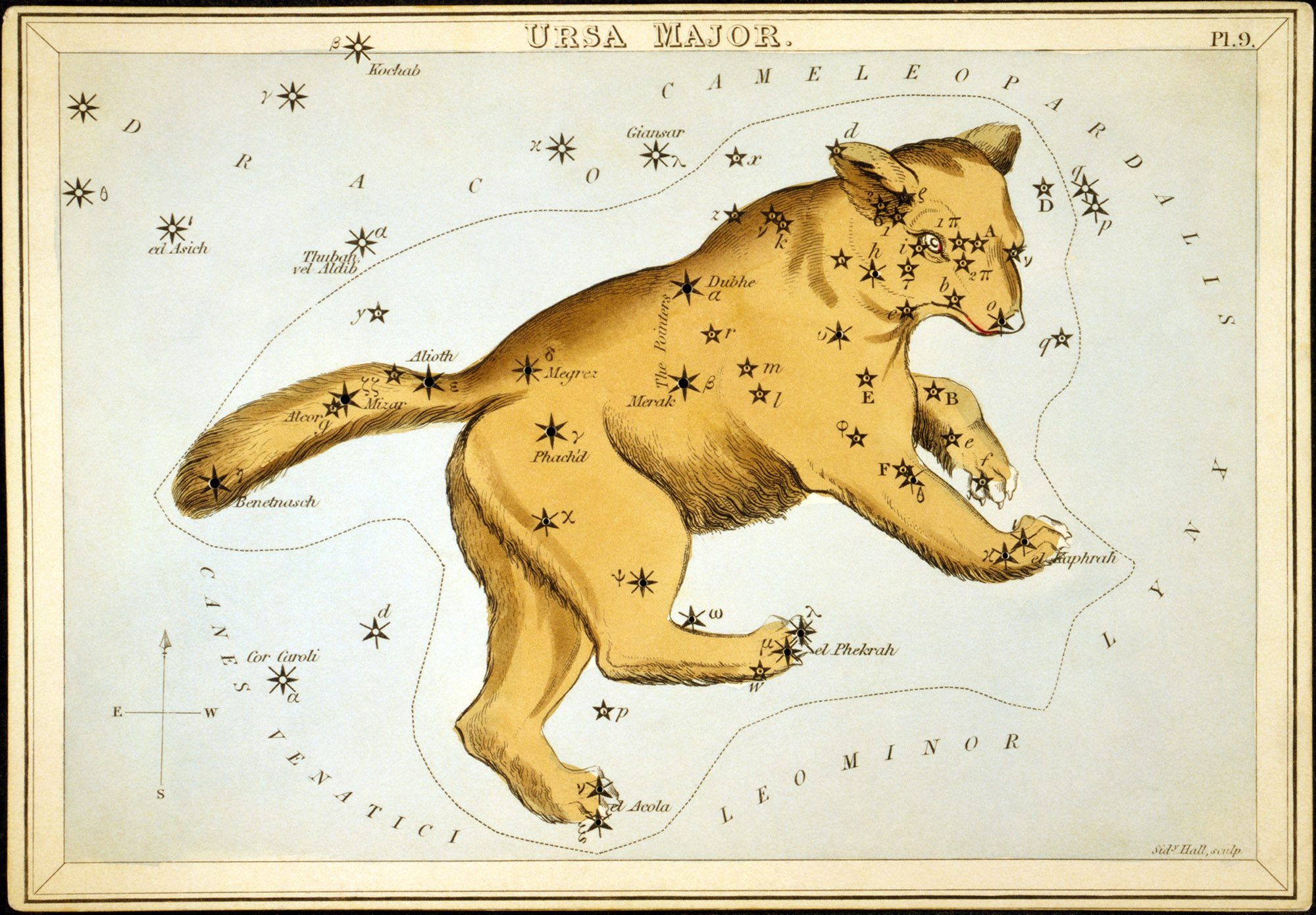
Sidney Hall - this image is available at Prints and Photographs Division of the Library of Congress under the digital ID cph.3g10058.
This tag does not indicate the copyright state of the associated work. One needs a specific tag relative to the copyright.
Consult Commons:Licensing for more information. Public domain, wikimedia
The seven brightest stars in Ursa Major are famous in many cultures around the world. Their popularity is due to their position near the celestial North Pole and they were therefore useful in locating the cardinal points at night. What’s more, they were the first stars to be mentioned in Western literature, precisely, by Homer who pointed out how they were used for navigation in the Mediterranean sea at night. For the Romans, however, they represented seven oxe endlessly grazing in a circle. From the latin Septem trionesn (seven oxen) we get the Italian term "settentrione" which means up north. In Greek mythology the constellation was linked to Callisto, a nymph of Artemis who was turned into a bear by a jealous Hera fearing she had had a son with Zeus. Callisto and her son were placed together in the sky as a constellation.
Merak, the Beta star, is not as bright as Dhube. It has a yellowish hue and a mass of 2.64 times that of the Sun. It is the same type of star as the Sun but with a higher surface temperature of about 9,000°C.
Mizar and Alcor are the most interesting stars in the constellation. Mizar is the penultimate star in the shaft of the Plough and Alcor is its companion star which can be seen with the naked eye. In fact, in ancient Persia, the ability to see the star was a test that aspiring guards had to take in order to assess their vision. We are dealing with a complex physical system. With the aid of a small telescope it is possible to split Mizar however, spectroscopic analysis indicates that there is actually a group of six stars held together by gravitational means. They are 85 light-years from Earth.
Alioth is the epsilon star but it is actually the brightest star in the constellation. It is 81 light-years away and has a beautiful white color. It is 100 times brighter that the Sun.
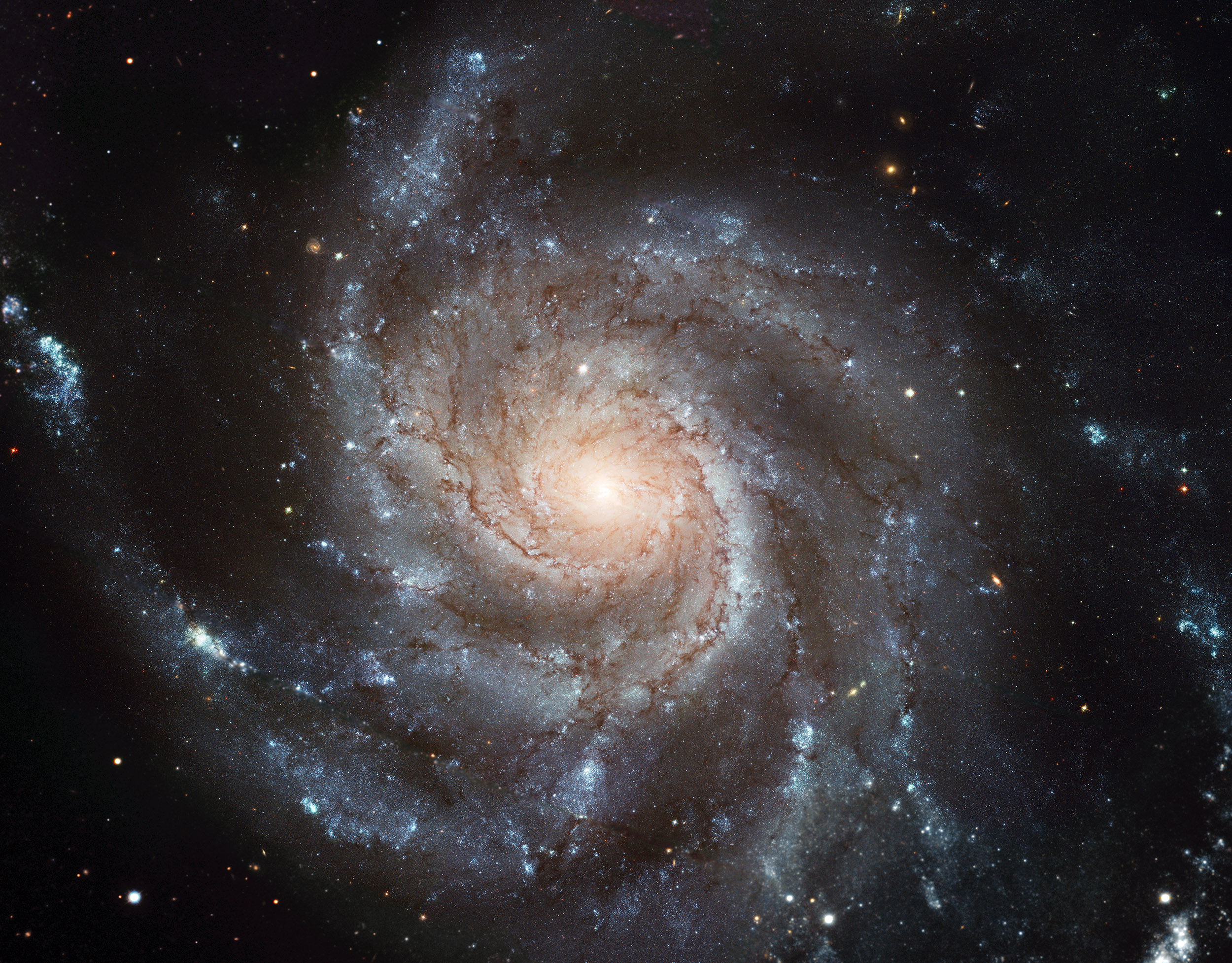
European Space Agency & NASA
Acknowledgements:Project Investigators for the original Hubble data: K.D. Kuntz (GSFC), F. Bresolin (University of Hawaii), J. Trauger (JPL), J. Mould (NOAO), and Y.-H. Chu (University of Illinois, Urbana)
Image processing: Davide De Martin (ESA/Hubble) - CFHT image: Canada-France-Hawaii Telescope/J.-C. Cuillandre/Coelum - NOAO image: George Jacoby, Bruce Bohannan, Mark Hanna/NOAO/AURA/NSF - hubblesite.org spacetelescope.org,
Public domain, wikimedia
M101 is the Pinwheel galaxy, a beautiful spiral visible with a small telescope at the top of a hypothetical triangle formed by the stars Mizar and Alkaid. It is 19 million light-years from us and has a diameter of 170,000 light-years which is much bigger than our Milky Way.
_Galaxy_Group.jpg)
Keesscherer - Own work,
CC BY-SA 4.0, wikimedia
M81-M82 are two galaxies near to one another, held together by their gravitational pull. They are easily seen through a small telescope. M82 looks like a cigar while M81 has a clear spiral shape. Both are 12 milion light-years away.
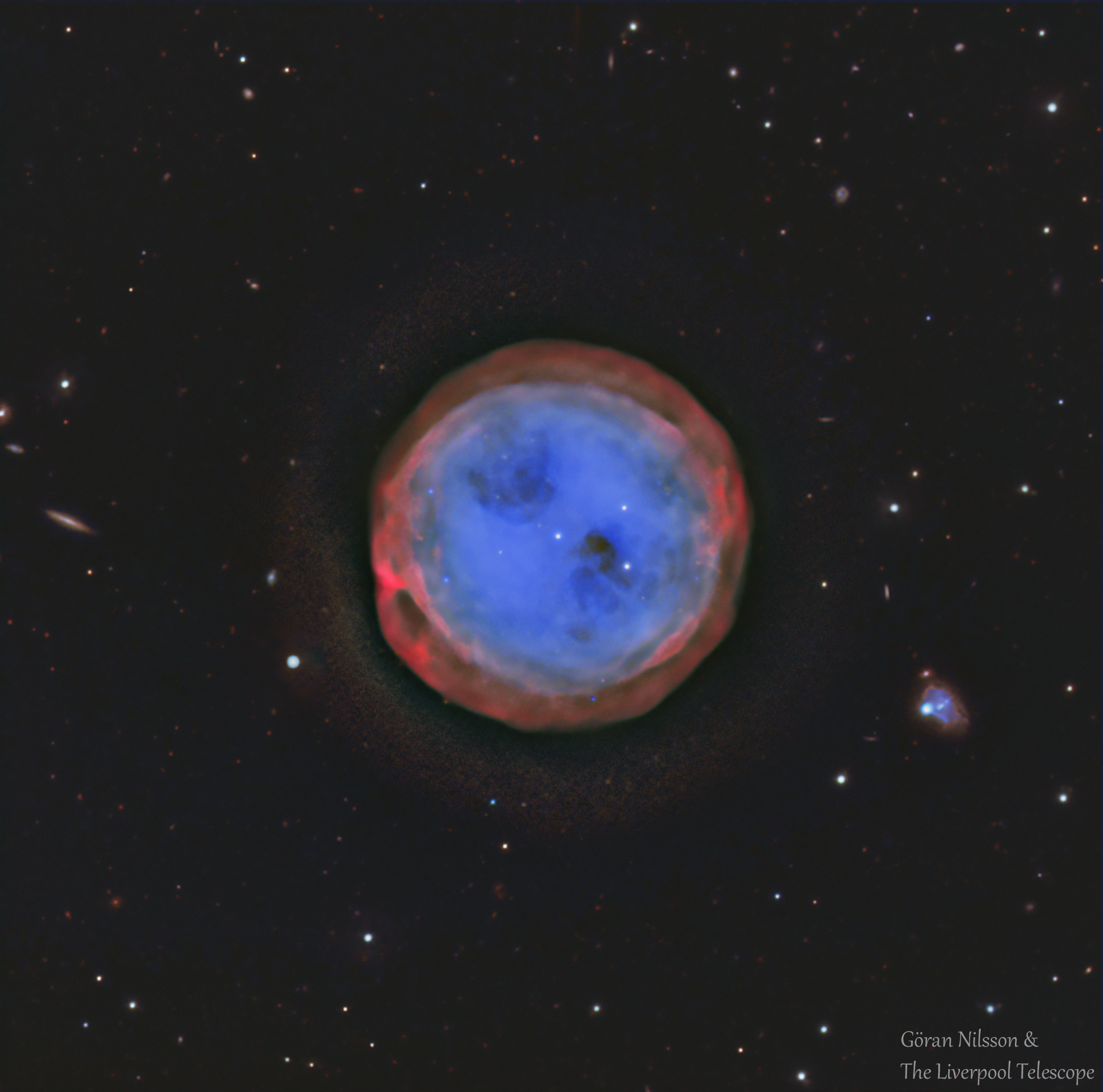
Göran Nilsson & The Liverpool Telescope - Own work
CC BY-SA 4.0, wikimedia
M97 is called the OwlNebula because of the two dark areas it contains which look like the typical round eyes of an owl. It can be seen with a medium-sized telescope and is not far from the star Merak.
Southern Hemisphere: the seven stars of the Plough are visible in the early evening from April to July up to the latitude of 20° south.